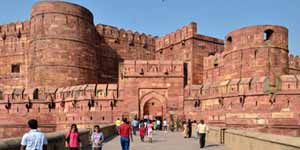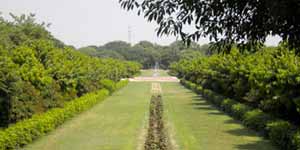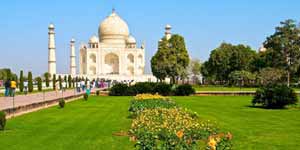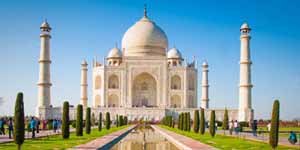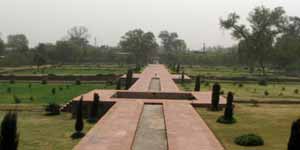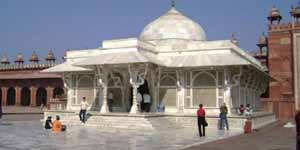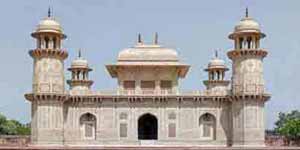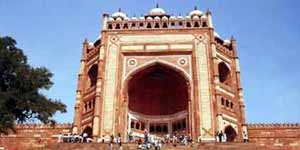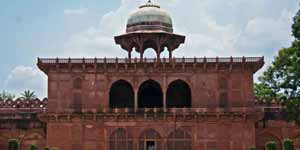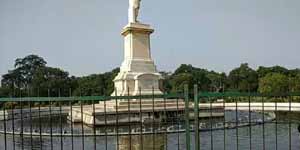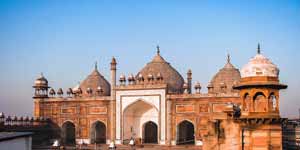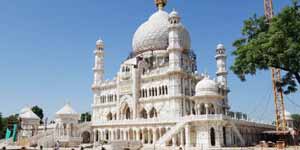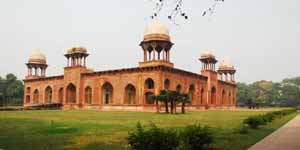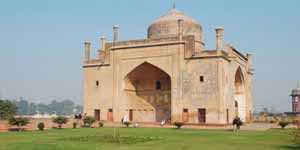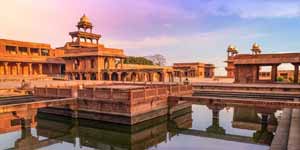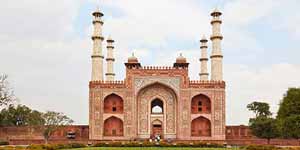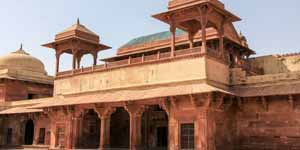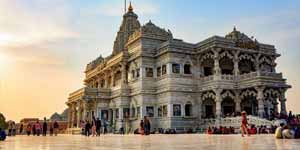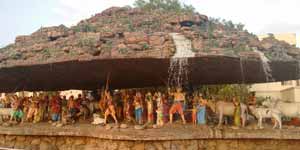

Fatehpur Sikri Agra is one of the most popular places in Uttar Pradesh and is situated in the Agra District of the state. Its history is connected with the Mughal emperor Akbar and has been the capital of his reign. It was constructed over a period of fifteen years after an excellent planning. The structure of Fatehpur Sikri Agra includes vast palaces, harems, royal courts, private quarters and a mosque. Moreover, it consists some utility buildings as well.
Being used very heavily over the centuries, it’s almost half of the quarters and the imperial complex is intact and vice versa. These complexes spread more than two miles long. A five-mile large long wall covers Fatehpur Sikri all from three sides. According to a survey, when it was excavated, the foundations of temples of Jain gods were found. These were very ancient temples and believed to be constructed in 11th century AD.
Swarup Chandra Jain who was the senior leader of Jain Community identified them as the statue of Bhagwan Adinath, Bhagwan Rishabh Nath and Jain Yakshinis. Thus Fatehpur Sikri Agra is also believed to be a Jain pilgrimage center in early era. However ASI stopped the excavation all of the sudden and put the idols and other things in the guest hour for research.
Situated on a rocky foot, the Buland Darwaza, Fatehpur Sikri Dargah also called as Tomb of Shaikh Salim Chishti and Diwan-i-Aam are the main attractions of the city. The elegant and classy architecture of buildings and places makes it a unique place to travel and have the taste of royalty of Mughal empire. Furthermore, Ibadat Khana (the house of worship) was the biggest attraction as it was the meeting house where the foundations of Din-E-Ilahi were laid by the Mughal emperor Akbar in Fatehpur Sikri. Panch Mahal which resembles like a pyramid but actually is a five storey building which decreases the size as its height increases.
Birbal who was the dearest minister to Akbar had a quarter in the city called Birbal’s House. Birbal was one of the nine gems (Ratna) of the Akbar’s Darbar. Naubat Khana which is yet another attraction of the Mughal capital as was recognised as the centre of music in Fatehpur Sikri. Talking about Music in the Mughal empire who can forget Tansen. Tansen was also one of the nine gems of Akbar Darbar. He had an excellent command over music and the instruments, and this place was specially structured for listening to enchanting music of Tansen.
Apart from being a beautiful and royal piece of architecture, Fatehpur Sikri has rock solid preparations for the security of the fort and all the buildings. Hiran Minar is the first-mile post and known as a tower from where the border of the city could be seen. In other words, Fatehpur Sikri Agra has countless numbers of places to watch out. The architecture of not only the fort but also of all the buildings is tremendously beautiful and extremely popular among tourists as it is also not far away from the Agra city Airport.
History and Architecture
The great emperor Akbar had no heir. He visited many places offering prayers and seeking blessings of saints. On one such endeavor he was blessed by a Sufi Saint Sheikh Salim Chishti in the village Sikri and the saint foretold that the emperor will be blessed with a son. After birth of his son the emperor showed his gratitude by building a city in the honor of the Sufi Saint and named it Fatehpur Sikri. "Fateh" in Persian language means "victory".
The city is about 37 km from Agra on the Sikri ridge 3 km in length and 1km wide surrounded by wall covering three sides and a lake on the fourth side. Akbar conceptualized to build the walled city which took around fifteen years to complete and includes royal palaces, private quarters, harems, different utility buildings, court and mosques. Tuhir Das, the architect of the city primarily used Indian principles which includes use of various regional schools of art and craftsmanship specially that of Bengal and Gujarat. Apart from Islamic elements, significance was given to Hindu and Jain architecture. Akbar shifted his capital from Agra to Fatehpur Sikri. Number of gates was built to approach the city namely Delhi Gate, Agra Gate, Lal Gate, Birbal's Gate, Gwalior Gate, Tehra Gate, Chandanpal Gate, Chor Gate and Ajmere Gate. After the death of the Sufi saint, Akbar erected a Tomb of the saint made of red Sandstone. It is this city that gave birth to the legends of the great Akbar and his famed courtiers known as "Navratnas" or the nine jewels.
Persian principles are highly reflected in the complex as Akbar wished to revive magnificence of Persian court ceremonial as was during the time of his famous ancestor Timur. Local abundance of red sandstone was fully utilized in constructing the structures and buildings. The royal palace complex consist series of individual pavilions that were beautifully arranged in geometric patterns inspired from Arabian and central Asian encampments and rests on a piece of level ground. The monuments and structures in Fatehpur Sikri remind one about artistic sense and the holistic approach of the great emperor. Influence of Indian embellishments is highly represented.
Due to shortage of water availability the palatial complex was abandoned by Akbar just after its completion in 1585. The presence of nearby Rajputana areas in the North West and the increasing turmoil also caused shifting of the emperor's base from Fatehpur Sikri to Lahore and thereafter again to Agra in 1598.
